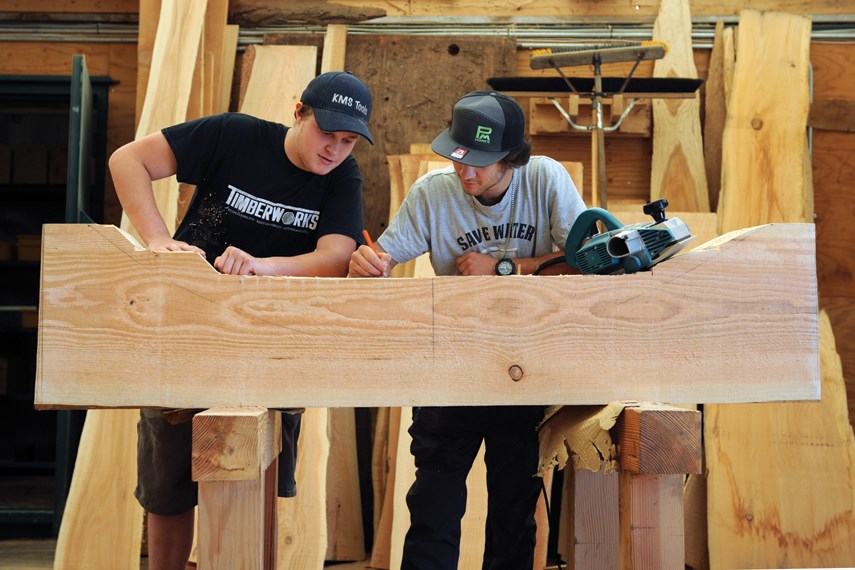Noah Boleslawski, 18, admits he was never the biggest fan of academic courses in high school.
When it came to hands-on learning, though, that was different.
“I did wood shop in Grade 8 and 9 and I really loved it,” he said.
When he found out about the carpentry trades program run out of West Vancouver Secondary and signed up, there was no looking back.
The story was similar for Alwyn Greeff, 20, who says he was trying to figure out his direction in high school until he came across the Youth Train in Trades program.
Afterwards, both students decided to take their trades skills a step further with the Youth Work in Trades program, allowing them to get high school credits and graduate secondary school while getting paid to work on the job.
The first day, “I got straight on to ‘earth engineering,’ ” said Boleslawski. “I was straight on the shovel, digging a really long trench.”
He stuck it out, and was soon learning as part of a crew doing home renovations. “I wanted to prove myself – that I can also do other things,” he said. “So I asked a lot of questions.”
Greeff also started out doing general labour – digging and chipping rock. But he was also made welcome on the crew and was soon having “the best time of my life.”
Greeff and Boleslawski not only graduated through the Youth Work in Trades program, but this week became two of four West Vancouver students – along with Kieryn Maryk and Joshua Buckingham – handed $1,000 cheques by the province for exceeding the 480-hour requirement of the program by putting in over 900 hours of work.
Trades getting renewed recognition in schools
Both programs at West Vancouver Secondary are part of a renewed recognition of the trades as a valuable career choice for secondary students.
Students who take the Train in Trades program spend a concentrated period of time doing hands-on training in carpentry at West Van Secondary, combined with job site experience. When they complete the program they have credit for Level 1 of post-secondary technical trades training.
This year, two students who completed the program – Oliver Creswick and Rohan Tupling – are also being awarded $1,000 scholarships from Naikoon Contracting.
Students who do Work in Trades take that one step further – essentially learning on the job approximately half time while getting credit for high school courses.
Greg Cormier, who teaches the program (when he’s not busy with his job as a building inspector on Bowen Island) says the program appeals to a range of students. Some are academic students who want a chance for a more hands-on experience. Others are teens who’ve struggled with high school.
In some cases, the program is life-changing – students have gone from not showing up to classes to attending school every day.
Students – who come from both North and West Vancouver schools – are expected to be at school by 7 a.m., the way they would be for most job sites.
"I treat them as adults," said Cormier - and the students live up to that challenge. "It's a post-secondary program."
Training has included small construction projects at the school – like the canoe shed students built from the ground up to shelter the Tel’Tewit (West Wind) canoe used for Indigenous curriculum at the West Van school district.
But off site experience is also important, said Cormier. “We spent three weeks on a concrete foundation. Actually pouring the concrete,” he said.
Demand for student trainees is high
Contractors are enthusiastic supporters of both programs. In fact, Cormier said currently he has more demand for trainees than he has students. Employers appreciate that students come with training but without bad habits. They've also been trained to be safe on the job.
Greeff said once he got working on a job site on Bowen Island, “I didn’t have any problem with waking up at 5:30 every day, taking the 7 o’clock ferry every morning.”
Boleslawski has continued to learn on the job, using some different skills in renovation than in all-new construction.
“We have to work with the stuff that’s there. We have to see how they did it back then and we have to fix it or bring it up to code,” he said.
Both said they would "100 per cent recommend" the program to other students who are considering working in trades.


